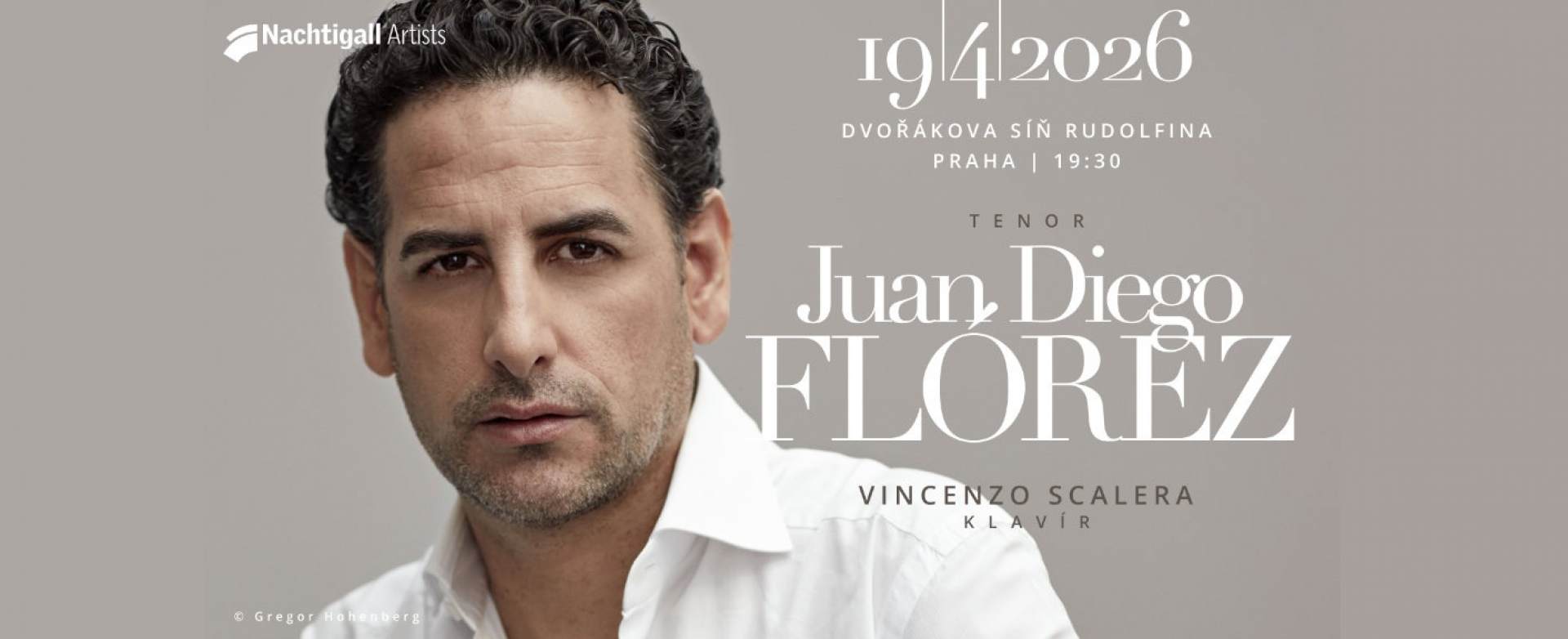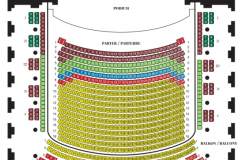Juan Diego Flórez
April 2026 | ||||||
|---|---|---|---|---|---|---|
Mo | Tu | We | Th | Fr | Sa | Su |
Juan Diego Flórez | Recital
Native of Lima, Peru, Juan Diego Flórez is returning to Prague. This will be his fifth appearance in the city at the invitation of the Nachtigall Artists agency: his first performance was in December 2012 in Prague with the superb pianist Vincenzo Scalera, followed by another concert in December 2014 with the Prague Philharmonia, and again in October 2017 and December 2021 with Vincenzo Scalera.
Flórez's first major success came at the age of twenty-three at the Rossini Opera Festival in Pesaro in 1996. His performance as Corradino (Matilde di Shabran) caused a sensation, marking the beginning of a rapid rise for the young tenor. Since then, he has become one of the most sought-after singers at the leading opera houses and festivals worldwide.
The charismatic artist has received numerous prestigious awards, including the honorary title of Court Singer from the Austrian Ministry of Culture. The Peruvian government awarded him the highest state decoration, the Grand Cross of the Order of the Sun of Peru, and in November 2012, he was appointed a UN Goodwill Ambassador for Education, Science, and Culture (UNESCO). In 2011, he founded the social project Sinfonía por el Perú, inspired by the Venezuelan program El Sistema which focuses on helping the most vulnerable children and young people across Peru.
Juan Diego Flórez will be coming to Prague with renowned Italian pianist Vincenzo Scalera, who has gained fame as a piano partner to many famous singers (Carlo Bergonzi, Andrea Bocelli, Montserrat Caballé, José Carreras, Vittorio Grigolo, Katia Ricciarelli, Sumi Jo, Renata Scotto, Cesare Siepi, and others). Don’t miss this celebration of the highest vocal artistry!
Program and cast
Juan Diego Flórez – tenor
Vincenzo Scalera – piano
Rudolfinum
The Rudolfinum, one of the most noteworthy buildings in Prague, was built between 1876 and 1884 according to the designs of architects Josef Zítek and Josef Schulze. Originally intended as a multipurpose cultural building in Prague, the Rudolfinum was inagurated on February 7, 1885. It carried out its mission until 1919, when it was converted to the House of Commons of the Czechoslovak Republic. Concert activity was restored to the Rudolfinum during the German occupation, but full rehabilitation, particularly of the gallery, did not take place until 1992. After a general reconstruction by architect Karel Prager in 1992, the Rudolfinum became the home of the Czech Philharmonic and the Rudolfinum Gallery.
Dvorana – Ceremony Hall
The central space in the gallery portion of the Rudolfinum was designed by Josef Zítek and Josef Schulz as an entrance hall to the art gallery. After 1918, however, this space was converted into a parliamentary cafeteria, and after World War II it served as a gymnasium for the Prague Conservatory. At the end of the 1980s, Ceremony Hall was threatened with reconstruction – but plans to tear down the main staircase to make room for another concert hall did not go through, and the hall retained its original appearance. Of particular interest in Ceremony Hall are 25 empty spaces on its walls, which were originally intended to be filled in with frescos. The majority of the eminent Czech painters, however, boycotted the 1891 fresco competition in protest over the large number of German artists involved in the construction of the Rudolfinum.
Dvořák Hall
The Czech Philharmonic took the stage in this world-famous concert hall in 1896, performing for its first-ever concert under the baton of Antonín Dvořák himself. The hall remained a space for concerts and performances until 1918, at which time it became a boardroom for the new parliament of the Czechoslovak Republic. The stage and the organ loft became a tribunal (garnished with a statue of President T.G. Masaryk), from which parliamentary leaders presided over proceedings. The hall's original character (and purpose) was restored
in 1940–1942 according to a project conceived by Antonín Engel and Bohumír Kozák, and it has remained in this form through to the present. In accordance with Josef Zítek and Josef Schulz's original proposal, the central visual element in the hall is an organ, which was made in Frankfurt, Germany. During the hall's stint as a parliamentary meeting place, the organ was housed in Brno. When it returned to the Rudolfinum in 1940, its register was extended. Dvořák Hall's final update took place in 1992 when the entire Rudolfinum building underwent reconstruction.
When travelling by public transport, get off at the Staroměstská metro station (Line A), tram stop (trams nos. 17, 18 and 53) or bus stop (no. 207).
Parking is available at the underground parking facility on Jan Palach Square. The facility is not part of the Rudolfinum premises.

 EN
EN DE
DE IT
IT FR
FR ES
ES RU
RU JP
JP RO
RO
 Seating plan
Seating plan 